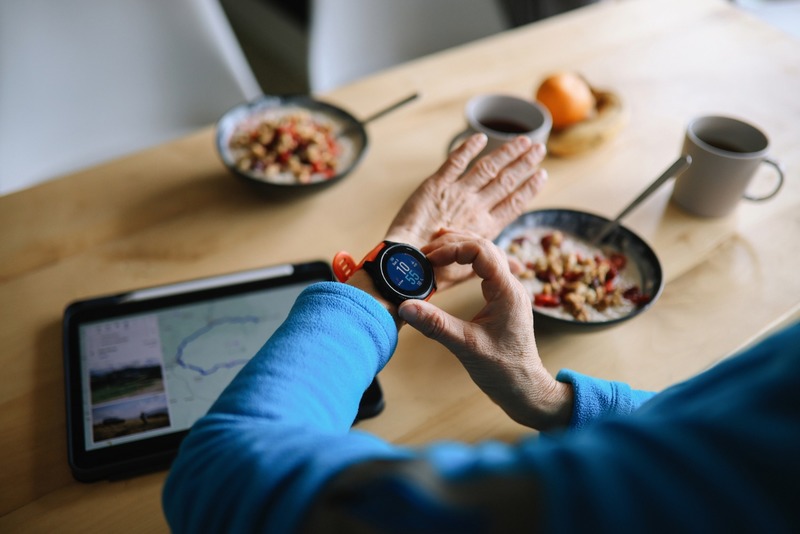News
A Mindset for Healthspan: The Blueprint for a Resilient, Elevated Life

Longevity isn’t just about adding years to your life—it’s about adding life to your years. Healthspan, not just lifespan, is the real goal: maximizing the number of years we stay strong, sharp, and fully engaged in life. While medical breakthroughs and cutting-edge science offer powerful tools, the most transformative force for extending healthspan isn’t found in a lab—it’s found within us.
Your mindset is the foundation of healthspan. Science backs it. Experience proves it. And history shows that those who master their mindset not only live longer but better. By aligning your thoughts, beliefs, and daily actions with proven principles of longevity—mental resilience, physical strength, emotional balance, and deep purpose—you unlock an extraordinary path to a vibrant, fulfilling life. This isn’t just theory; it’s where ancient wisdom meets modern science, and where the right mindset becomes the ultimate biohack for longevity.
Healthspan Starts in the Mind: The Science of Longevity and Mental Resilience
Lifespan measures how long you exist. Healthspan measures how well you live. The data is clear: your mindset directly influences both. Optimism, mental toughness, and emotional resilience have a measurable impact on inflammation, immune function, and even cellular repair. A Boston University study found that people with a positive outlook were 15% more likely to live beyond the age of 85—and not just live but thrive.Why? Because mindset shapes biology. Your thoughts and beliefs influence stress response, hormone balance, and even gene expression. Neuroplasticity—the brain’s ability to rewire itself—means that with the right mental training, you can shift your health trajectory at any age.
Positive and negative effects of mindset:
- Chronic stress = accelerated aging. Cortisol, the stress hormone, wrecks metabolism, sleep, and cognitive function.
- Optimism = longevity. Positive thinking reduces inflammation, enhances cardiovascular health, and boosts immune resilience.
- Emotional resilience = longer healthspan. The ability to reframe setbacks, regulate emotions, and stay mentally strong protects against disease.
- This isn’t just “mindset fluff.” It’s neuroscience, behavioral economics, and even quantum physics all pointing to the same truth: the way you think shapes the way you age.
Mental Alignment: Rewiring Your Brain for Strength & Adaptability
Your brain is both an architect and an engine—it builds the structures that define your habits, emotions, and resilience. The good news? You can train it.Tactical tools for mental resilience:
- Mindfulness and meditation are proven to reduce cortisol, increase gray matter, and enhance emotional regulation. Even 5-10 minutes a day rewires your brain for resilience.
- Journaling and gratitude boost dopamine and serotonin, enhancing mood, motivation, and long-term mental strength.
- Affirmations and visualization are not just feel-good talk. Elite athletes use visualization to achieve peak performance, and it works just as well for health and longevity.
Physical Alignment: Building an Anti-Fragile Body
A resilient mind needs a strong body. Strength training, metabolic flexibility, and recovery are the cornerstones of staying physically unstoppable as you age.- Strength is longevity. Muscle mass is one of the most powerful predictors of long-term health. Lifting heavy = living longer. Progressive overload isn’t just for athletes—it’s for everyone who wants to stay strong into their 80s and beyond. Strength training is particularly important for women as they age–their increased risk of osteoporosis and bone loss can be mitigated by building muscle mass through resistance training.
- Metabolic flexibility matters. Fasting, cold exposure, and structured stressors (like sauna therapy) build mitochondrial resilience, enhancing longevity at the cellular level.
- Recovery isn’t optional. Sleep, mobility, and deliberate rest optimize performance and longevity. Why We Sleep by Matthew Walker lays it out: sleep is a non-negotiable for healthspan. Walker recommends adults get 7-9 hours of sleep per night.
The game plan for physical resilience:
- Lift weights 3-5x per week. This is non-negotiable.
- Walk 10,000+ steps daily. Movement is medicine.
- Prioritize protein. Muscle = longevity–eat accordingly.
- Use recovery as a weapon. Sauna, cold therapy and Heart Rate Variability (HRV) tracking all help you dial in your system.
- This isn’t about aesthetics. It’s about function, vitality, and making sure your body is a fortress for decades to come.
Emotional Resilience: Mastering the Energy of Emotions
Emotions are energy in motion. The Hermetic Law of Vibration teaches that everything has a frequency—including your thoughts and emotions. Gratitude, joy, and purpose resonate at high frequencies, while stress, anger, and anxiety drain your system.- Social connection = longevity. Loneliness is as damaging as smoking 15 cigarettes a day. Surround yourself with a tribe of health warriors.
- Gratitude is biochemical. Daily gratitude reduces cortisol, increases dopamine, and literally rewires your brain for resilience.
- Forgiveness isn’t about them—it’s about your health. Letting go of past stressors reduces inflammation and improves longevity markers.
Purpose: The Longevity Multiplier
Want to know the #1 common trait among the world’s longest-lived populations? They wake up every day with a sense of purpose.- Ikigai (Japan): A reason to get up every morning.
- Blue Zones: Every long-lived culture has strong social ties and meaningful daily activities.
- Harvard Longevity Study: The longest-running study on human health found that purpose and relationships matter more than cholesterol levels.
The Healthspan Blueprint: The Daily Formula for Thriving
Morning- Strength-train or do Zone 2 cardio, a style of exercise in which you maintain your heart rate within a specific range, typically between 60% and 70% of your maximum heart rate.
- Hydrate, move, and get early sunlight (boosts cortisol rhythm, sleep quality, and mood).
- Practice gratitude and goal-setting (trains your mind for resilience).
- Move every hour. Sitting = slow death.
- Prioritize protein and whole foods. Blood sugar stability = longevity.
- Wind down with reading, reflection, or breathwork (your nervous system will thank you).
- Prioritize deep sleep—it’s your body’s #1 recovery tool.
The Ripple Effect: Your Health is Your Shield
Your mindset, habits, and resilience don’t just affect you. They influence your family, your team, and your entire community.When you prioritize healthspan:
- You inspire others to do the same.
- You become a leader in your circle.
- You shift culture toward longevity.
Final Thought: The Elevated Life is Yours to Build
You don’t have to accept decline. A longer, stronger, more resilient life is within your control. It starts with a decision–a decision to master your mindset, move with purpose, and refuse to settle for mediocrity.More News
-
New!
More

First Chair to Last Call: What Does Alcohol Really Mean For Your Health?
In nearly every Colorado ski town, some iteration of the neon sign blares its play-hard-party-harder anthem. It’s a not-so-subtle nod to mountain party culture, a lifestyle that normalizes combining sports and outdoor adventures with heavy drinking and partying. In Eagle County, après culture, high-altitude living and outdoor performance have coexisted for as long as locals have been sliding on snow. But how much is too much at altitude? And what role do social support systems play in helping residents find balance?
-
New!
More

Counting More Than Steps: How Wearables Can Help (or Hinder) Your Health
From step counts to sleep stages, heart rate variability to blood sugar spikes, wearable devices are giving us a front-row seat to what’s happening inside our bodies. Strapped to wrists, slipped onto fingers or wrapped around our biceps, wearables like the Oura Ring or Whoop strap promise insight and advice in the quest for better health.
-
More

Cass Barham and Sarah Crabtree Honored As Recipients of Vail Health Elevate Award
Cass Barham and Sarah Crabtree, both lab techs at Vail Health Hospital, have been named recipients of the Vail Health Elevate Award. Vail Health created the Elevate Award in June 2022 to give patients and their families an opportunity to nominate and thank employees who have touched their lives in some way.
